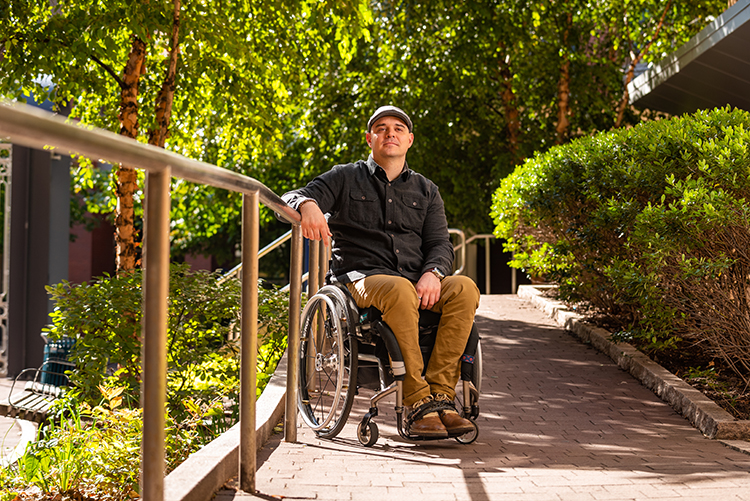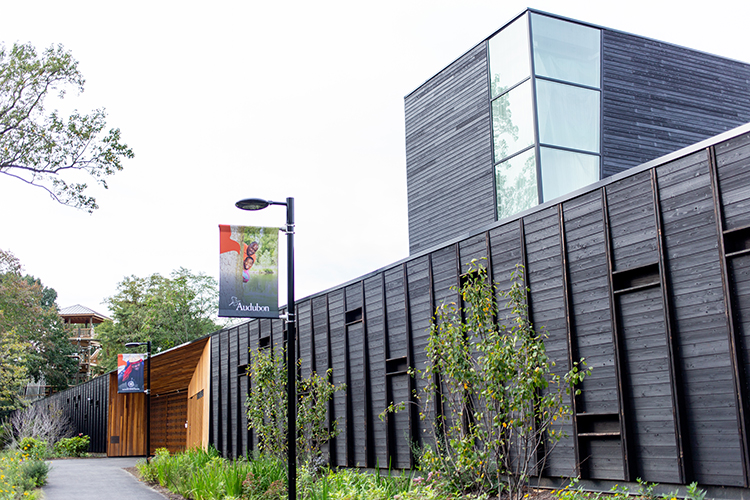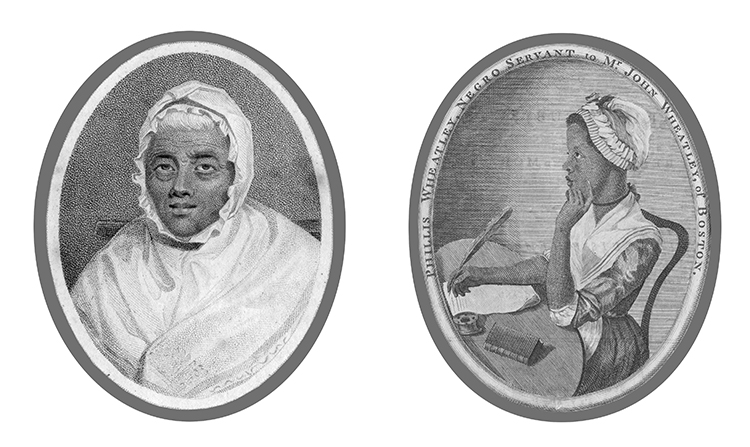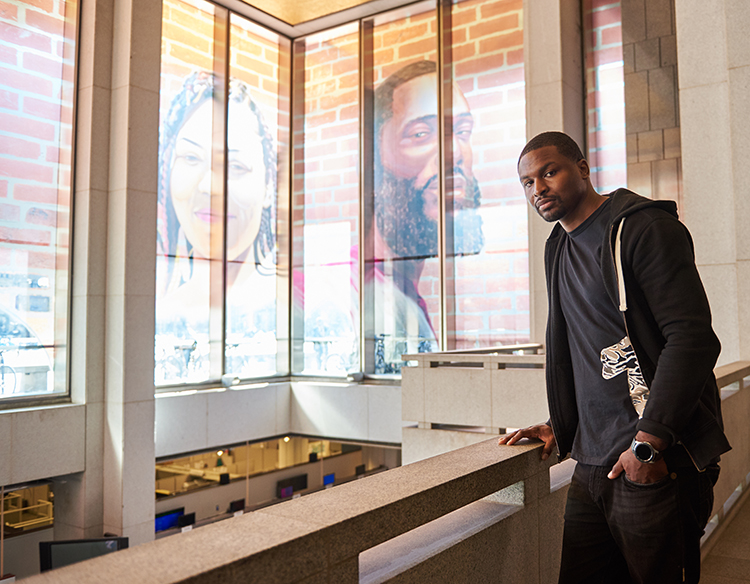Photo: Kriston Jae Bethel
Access for All
By Alexandra Jones
On two legs, museums make sense. You’re able to see and be seen over the ticket counter or visitor information desk. Informational panels next to objects are relatively close to eye level. It’s easy to spot signage pointing you upstairs to another collection—and easy to get up those stairs once you do.
For a wheelchair user, it’s a different story.
“The world was never made for people who are sitting down full time,” experiential designer Ben Baker says. “The world was made for people who walk. Everywhere you go, there’s going to be challenges.”
At museums, those challenges are varied—whether it’s finding information about accessible parking or avoiding the glare from a glass frame that only a seated patron would see.
That’s why when the Franklin Institute was updating its wayfinding with greater accessibility in mind, Baker, producer and resource manager at Fishtown-based experience design agency Bluecadet, advised them not only to think about how a wheelchair user moves through their museum, but to try it in a wheelchair themselves.
“Unless you put yourself in a wheelchair and go there, you won’t have that perspective,” he says.
According to a 2014 report issued by Institute for Museum and Library Services, there are more active museums in the United States—35,000—than locations of McDonald’s and Starbucks combined. That’s more than double the number of museums estimated in the 1990s, according to the Washington Post.
“When you’re talking about that many places, they have to be accessible,” Baker says. “We have to be on the front lines.”
Today—often after consulting Baker—the city’s museums continue to invest in accessibility for all visitors: With his help, the Mütter Museum chose an accessible ticketing desk model when it replaced the old one a few years ago. In addition to creating more navigable spaces and richer experiences for visitors with disabilities, the Franklin Institute was the first museum in the city to adopt the new handicapped symbol, which updates the familiar icon of a person in a wheelchair to communicate agency and movement.
The institute is also leading the way with accessibility in their interactive exhibits. Baker sees that progress reflected in the museum’s SportsZone, where visitors can crank pedals in a virtual bike race, develop and analyze their pitching technique, and even compete alongside virtual world-class athletes who appear on a huge video wall next to a 40-foot raceway.
Among the virtual athletes visitors can compete against are Philadelphia Eagles’ wide receiver Jordan Matthews and the considerably slower Phillie Phanatic—in addition to U.S. Paralympians Tatyana McFadden, a 17-time medalist who races in a wheelchair, and world record holder Richard Browne, who sprints with a running blade.
“It’s like you’re racing next to them,” Baker says. “If it were only able-bodied athletes that I was sprinting against, I wouldn’t have a connection to it.
“To be able to race against a world-class sprinter in a wheelchair gives the able-bodied public a nice glimpse into what an athlete is capable of.”
Ever since a fall down a flight of stairs in 2005, in which he sustained injuries to his neck and spinal cord, Baker has used a manual wheelchair to get around—a change that’s impacted not only his personal life, but his life’s work.
While his role at Bluecadet isn’t specifically about accessible design, he’s able to serve as a resource for other designers at the firm so that they can ensure their work will be accessible to all users.
“When we’re thinking about designing size and placement of a touch wall, for example, I get to look at the specs and help figure out if it really makes sense for a wheelchair user,” Baker says.
After graduating from Drexel University with a bachelor’s in marketing, Baker ran his own design business but soon realized he wanted to work in the cultural sector. After researching museum studies programs, he decided on Drexel’s museum leadership master’s program.
There Baker embarked on a research project that combined his knowledge and personal experience with accessibility issues and his passion for museum studies. While a student, he authored a paper titled “Physical Accessibility in Philadelphia Museums: Looking Beyond the ADA.” It examined the restrooms, entryways, and ticketing desks at 18 different landmarks like the Philadelphia Zoo, Eastern State Penitentiary and the Philadelphia Museum of Art—but it also analyzed how well these institutions were exhibiting collections and interactive experiences, considering factors like graspability of tactile components for visitors with limited to no hand function and the height at which artworks and their accompanying informational panels were displayed.
The historical buildings that are some of the city’s most popular landmarks are, unfortunately, cultural artifacts and, as such, aren’t universally accessible. But overall, Baker found that Philadelphia museums built after World War II have been “making good strides” in accessibility, typically meeting ADA standards.
Baker estimates that at the time of his injury in 2005, he could navigate approximately 25 percent of the city. Now he puts that that number closer to 40 percent—but an old city like Philadelphia is going to be slower to change, and that change costs more.
One challenge is that the Americans With Disabilities Act, enacted in 1990 to ensure that people with disabilities have the same rights and access as everyone else in places open to the general public, isn’t updated very often; it was last revised in 2010. That means that even a compliant business or institution might lag behind technological advances.
Baker is working with his colleagues at Bluecadet to develop standards that go beyond ADA requirements, collaborating with a spatial designer and going through the current ADA to consider aspects of a space like steps, tabletops or interaction with a wall.
“We’re trying to think about those standards in today’s world,” Baker said. “We want to make things 100 percent accessible so that outliers are within the bell curve as opposed to being outside of it.”
As the Baby Boomer generation ages, the number of people with disabilities visiting these institutions (and moving through public spaces in general) is growing, and Baker sees museums as being on the front lines of creating accessible spaces for all.
“My passion is within museums, and if I can push the ball a little bit within the museum world, I think I’m making a difference for a lot of people.”








